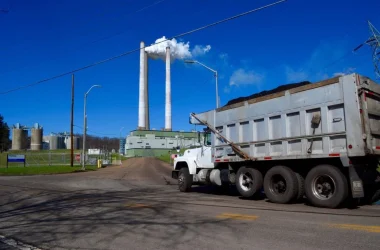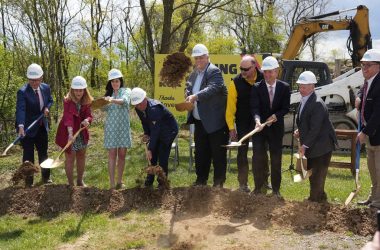WHEELING, W.Va. — Huge interstate pipeline projects, massive processing complexes and a plethora of productive wells amid the Marcellus and Utica shale blitz helped West Virginia grow its economy faster than all but three other states from 2013 to 2014, according to the U.S. Department of Commerce.
Figures released Wednesday show the Mountain State’s gross domestic product reached $68 billion in 2014, up from $64.7 billion the previous year. This is an increase of 5.1 percent, a growth rate topped only by Texas and North Dakota, while Wyoming falls into a statistical tie with West Virginia.
Gross domestic product, or GDP, is the total value of all goods and services produced within a particular government’s boundaries. Mountain State oil and natural gas industry leaders acknowledged their contributions to the growth.
“Show me anything else in the state that is growing. Not timber. And tourism would not generate that type of growth. West Virginia’s growth has to be from oil and gas,” said R. Dennis Xander, past president of the Independent Oil and Gas Association of West Virginia.
“I think when you look at the growth in the state, any reasonable person would agree that this has been phenomenal,” added Charlie Burd, IOGA executive director. “Over the course of the last three years, the state has seen tremendous growth. We are now producing about four times the amount of natural gas we did in 2008.”
Last month, Murray Energy Corp. and Alpha Natural Resources displaced 1,857 coal miners across West Virginia. While state officials welcome the news of their economic growth compared to others throughout the U.S., they are cautious because so much of West Virginia’s economy remains connected to coal.
“To ensure our economy’s continued growth, (Gov. Earl Ray Tomblin) has made the development of the Marcellus and Utica shales in West Virginia a top priority – and looks forward to capitalizing on the abundant supply of natural gas in our region, which will provide promising opportunities for future generations,” Tomblin spokesman Chris Stadelman said. “Gov. Tomblin understands the difficulties facing our coal industry and continues to fight for our miners, while making sure they have access to the education and training they need to secure a bright future in West Virginia now and for years to come.”
With a much larger population and workforce, Ohio does not show the percentage spike that West Virginia does year-to-year, as it finished 18th in the state rankings. However, the Buckeye State’s GDP jumped by $11 billion from 2013 to 2014, also largely due to the ongoing Marcellus and Utica shale rush.
In addition to the multiple interstate pipeline projects already taking shape to transport oil and natural gas from Ohio and West Virginia, the same company that is building the Rover Pipeline is now planning the $1.5 billion Revolution Pipeline. This 30-inch diameter conduit is expected to ship gas to market by the middle of 2017.
Burd said drilling itself may lag due to lower oil and natural gas prices for the next few months, but West Virginia’s shale boom is far from finished.
“I think we’ll see more activity at this time next year as compared to now,” he added.
To read more from The Intelligencer/Wheeling News-Register, subscribe here.





